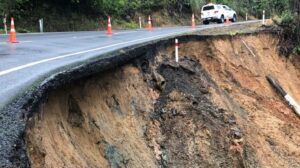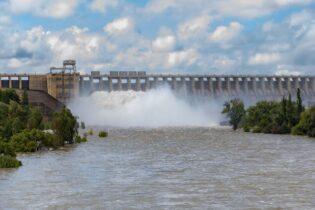The extensive damage inflicted by the recent Cape region storm, particularly in the Western and Eastern Cape, will result in a multi-billion-dollar repair bill, necessitating continuous infrastructure investment for South Africa.
In a report by IOL, Professor Richard Walls from Stellenbosch University’s Department of Civil Engineering, stated that the recent storm in the Cape regions, specifically Western and Eastern Cape, have resulted in widespread damage with costs that could potentially reach into the billions. Walls pointed out that estimating the exact costs at this stage is challenging due to the extensive nature of the damage. “Damage will be in the billions for damage to roads, stormwater, electrical lines, formal and informal homes, mudslides, losses by farmers, efforts by municipalities to clear up after the event,” Walls said. The storm’s impact was severe, causing damage to properties, evacuations, fallen trees, power outages, and road closures. Repairing this extensive damage will vary in duration, depending on the severity. Some damage can be swiftly remedied, while more substantial damage may require months to fully repair, according to Walls.
During adverse weather conditions, reports frequently surface regarding incidents like rockfalls and mudslides. In such situations, roads like Chapman’s Peak Drive often find themselves subject to road closures.
Walls emphasised the necessity for local engineers to thoroughly investigate mountain passes where such events have taken place, ensuring their safety. When evaluating the storm’s effects on roads, damage can range from minor mudslides that can be swiftly cleared within hours to more extensive damage caused by overflowing rivers, which can impact bridges significantly. He also highlighted the varying timelines for repairing damaged roads and foundations, stating, “Where damage to roads and foundations have occurred, the time to repair them may vary from weeks to months.” Additionally, he pointed out the need for local municipalities to assess slopes, abutments, and embankments to prevent significant damage that could lead to failures in future flood events. Damaged bridges “Bridges are designed for flood conditions, and their foundations, piers, and structural components should withstand severe conditions. However, this isn’t always the case,” Walls said. Repair methods for bridges will vary based on factors like bridge type and the extent of damage. For instance, a steel bridge may require reinforcement of damaged members, while a smaller farm bridge may need reconstruction if partially washed away. Larger concrete bridges on national roads may require repairs to the road surface or damaged sections. Walls also reiterated that local municipalities will be dealing with significant localized damage to roads and stormwater systems for an extended period. To enhance infrastructure resilience, Walls stressed the need for accurate data on rainfall and floods. This data is essential for reliably predicting peak flows and appropriately sizing bridges and culverts to withstand such flood events. Read next: Minister Ramokgopa calls for Pan-African view on Energy Infrastructure at UNESCO’s Africa Energy Week Conference | Infrastructure news






